Related Research Articles

Jusepe de Ribera was a Spanish painter and printmaker. Ribera, Francisco de Zurbarán, Bartolomé Esteban Murillo, and the singular Diego Velázquez, are regarded as the major artists of Spanish Baroque painting. Referring to a series of Ribera exhibitions held in the late 20th century, Philippe de Montebello wrote "If Ribera's status as the undisputed protagonist of Neapolitan painting had ever been in doubt, it was no longer. Indeed, to many it seemed that Ribera emerged from these exhibitions as not simply the greatest Neapolitan artist of his age but one of the outstanding European masters of the seventeenth century." Jusepe de Ribera has also been referred to as José de Ribera, Josep de Ribera, and was called Lo Spagnoletto by his contemporaries and early historians.

Laura Maria Caterina Bassi Veratti was an Italian physicist and academic. Recognized and depicted as "Minerva", she was the first woman to have a doctorate in science, and the second woman in the world to earn the Doctor of Philosophy degree. Working at the University of Bologna, she was the first salaried female teacher in a university. At one time the highest paid employee of the university, by the end of her life Bassi held two other professorships. She was also the first female member of any scientific establishment, when she was elected to the Academy of Sciences of the Institute of Bologna in 1732 at 21.
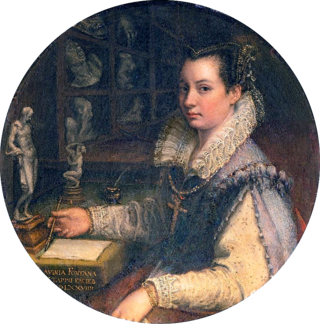
Lavinia Fontana was an Italian Mannerist painter active in Bologna and Rome. She is best known for her successful portraiture, but also worked in the genres of mythology and religious painting. She was trained by her father, Prospero Fontana. She is regarded as the first female career artist in Western Europe, as she relied on commissions for her income. Her family relied on her career as a painter, and her husband served as her agent and raised their 11 children. She was perhaps the first female artist to paint female nudes, but this is a topic of controversy among art historians.

The Accademia di San Luca is an Italian academy of artists in Rome. The establishment of the Accademia de i Pittori e Scultori di Roma was approved by papal brief in 1577, and in 1593 Federico Zuccari became its first principe or director; the statutes were ratified in 1607. Other founders included Girolamo Muziano and Pietro Olivieri. The Academy was named for Luke the Evangelist, the patron saint of painters.

Caterina or Catharina van Hemessen was a Flemish Renaissance painter. She is the earliest female Flemish painter for whom there is verifiable extant work. She is mainly known for a series of small-scale female portraits completed between the late 1540s and early 1550s and a few religious compositions.

Elena Lucrezia Cornaro Piscopia or Elena Lucrezia Corner, also known in English as Helen Cornaro, was a Venetian philosopher of noble descent who in 1678 became one of the first women to receive an academic degree from a university and the first to receive a Doctor of Philosophy degree.

Adriana Basile was an Italian composer and singer.

Carlo Cesare Malvasia (1616–1693) was an Italian scholar and art historian from Bologna, best known for his biographies of Baroque artists titled Felsina pittrice, published in 1678. Together with his contemporary Giovanni Pietro Bellori, Malvasia is considered "among the best informed and most intelligent historians and critics of art who ever lived."
Caterina Ginnasi was an Italian noblewoman and painter of the Baroque period, active mainly in Rome.
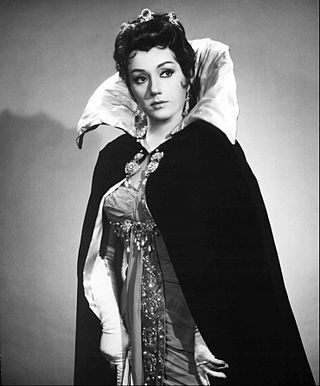
Gabriella Tucci was an Italian operatic soprano who was particularly associated with the Italian repertory and performed at notable opera houses worldwide. She appeared at the Metropolitan Opera in 11 Verdi roles across 13 seasons, including Violetta in La traviata and Desdemona in Otello.

Luisa Ignacia Roldán, known also as La Roldana, was a Spanish sculptor of the Baroque Era. She is the earliest woman sculptor documented in Spain. Roldán is recognized in the Hispanic Society Museum for being "one of the few women artists to have maintained a studio outside the convents in Golden Age Spain".

Bartolomeo Cavarozzi (1587–1625), occasionally referred to as Bartolomeo Crescenzi, was an Italian caravaggisti painter of the Baroque period. Cavarozzi's work began receiving increased admiration and appreciation from art historians in the last few decades of the 20th century, emerging as one of the more distinct and original followers of Caravaggio. He received training from Giovanni Battista Crescenzi in Rome and later traveled to Spain alongside his master for a few years where he achieved some renown and was significant in spreading "Caravaggism" to Spain before returning to Italy. His surviving works are predominantly Biblical subjects and still-life paintings, although older references note he "was esteemed a good painter especially of portraits".
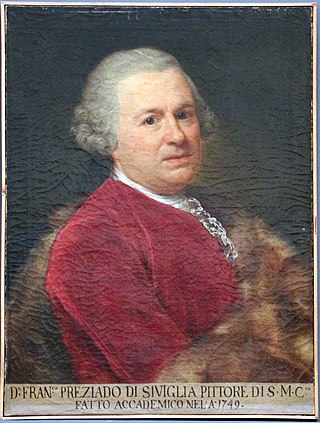
Francisco Preciado de la Vega (1713–1789) was a Spanish painter, active mainly in Italy. He was involved in a number of artists' associations in Rome, both as a member and an officer.

Caterina Albert i Paradís, better known by her pen name Víctor Català, was a Catalan writer in Catalan and Spanish who participated in the Modernisme movement and was the author of one of the signature works of the genre, Solitud (Solitude) (1905). Her literary skill was first recognized in 1898, when she received the Jocs Florals prize; soon thereafter, she began using the pseudonym Victor Català, taking it from the protagonist of a novel she never finished. Despite her success as a dramatist and her forays into poetry, she is best known for her work in narrative literature, with the force of her style and the richness of her diction being especially noted. She died in her hometown of l’Escala, Catalonia, in 1966 and is interred in the Cementiri Vell de l’Escala.
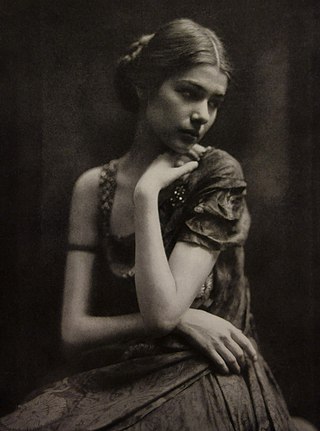
Clotilde Margarete Anna Edle von der Planitz, known professionally as Clotilde von Derp, was a German expressionist dancer, an early exponent of modern dance. Her career was spent essentially dancing together with her husband Alexander Sakharoff with whom she enjoyed a long-lasting relationship.
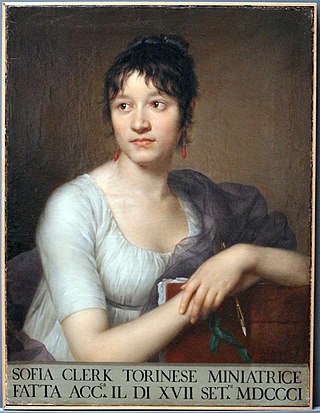
Sofia Giordano was an Italian painter.
Barbara Flaminia (1540–1586) was an Italian stage actress. She was one of the earliest actresses known in Europe and internationally known in her time. She and Vincenza Armani were the two most famed actresses in Italy in the 1560s and were described as great rivals.

Caterina Imperiale Pallavicini was an 18th-century Neo-Latin poet from the greater Genoa region. Her work, which was published in the collections of the Pontifical Academy of Arcadia, includes the styles of epigram and elegy.

Lorenza Böttner was a Chilean–German disabled transgender multidisciplinary visual artist.
DonDomingo Álvarez Enciso, also called Domingo Alvarez and Domingo Alvarezenciso, was a Spanish painter and copyist, active in Madrid and Rome in the second half of the 18th century.
References
- ↑ Profile at the Dictionary of Pastellists Before 1800.
- ↑ Victor Deupi (5 March 2015). Architectural Temperance: Spain and Rome, 1700-1759. Routledge. pp. 69–. ISBN 978-1-317-64249-7.
- ↑ Carole Paul (5 July 2017). The Borghese Collections and the Display of Art in the Age of the Grand Tour. Taylor & Francis. pp. 172–. ISBN 978-1-351-54592-1.
- ↑ "Francisco Preciado de la Vega | Real Academia de la Historia". dbe.rah.es. Retrieved 15 November 2023.